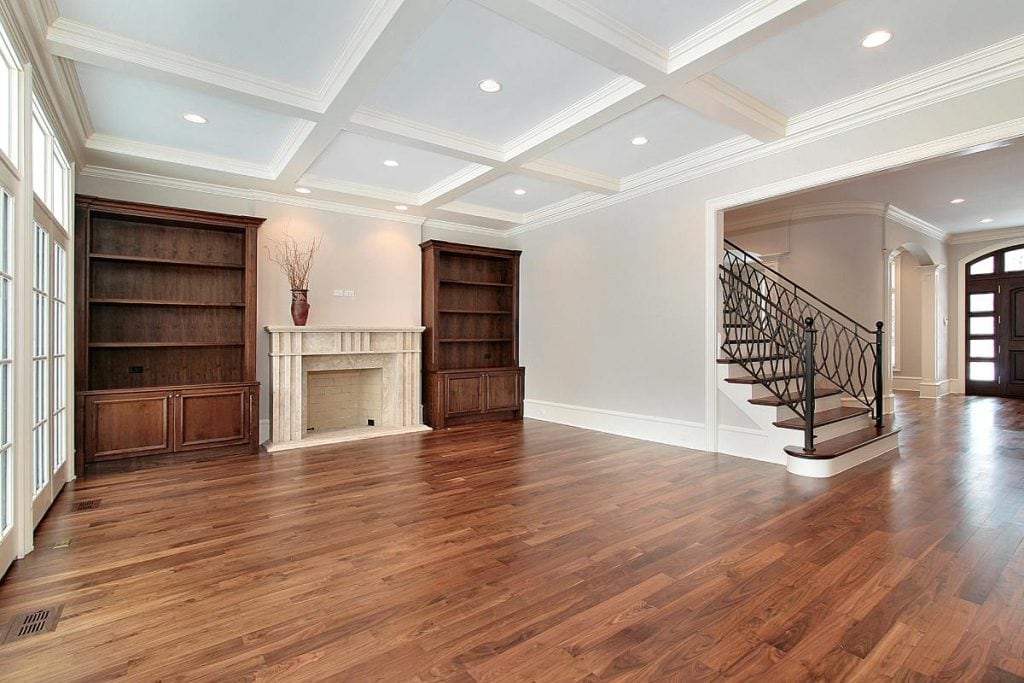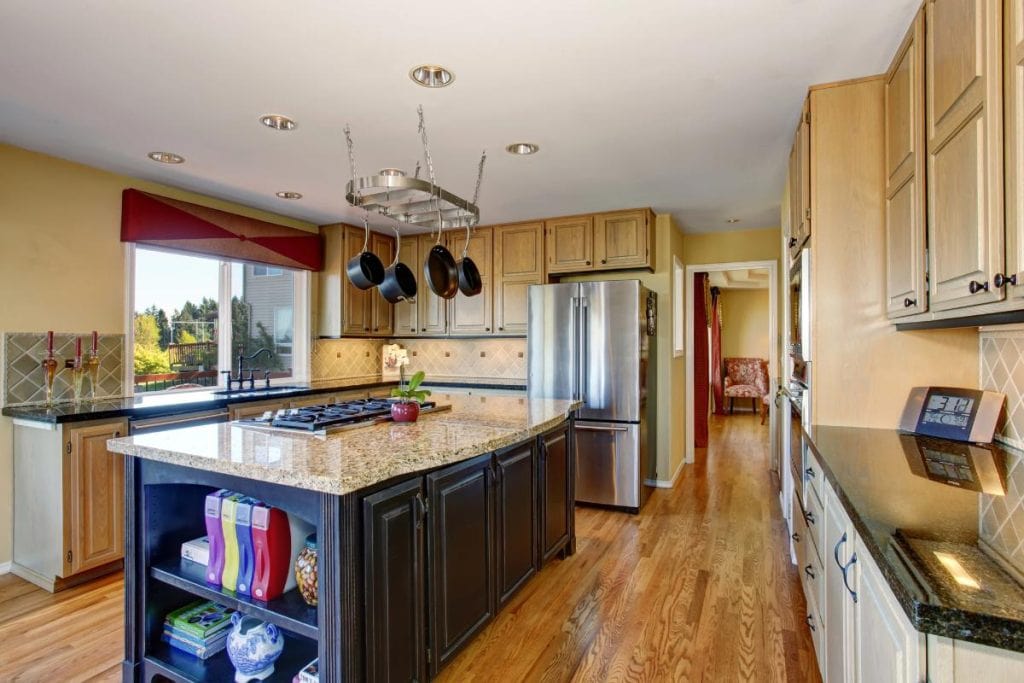When it comes to flooring, few options are as revered as hardwood floors. Hardwood floors bring a unique warmth and elegance to any room. Their natural look complements a variety of interior styles, from traditional to contemporary. This adaptability makes wood flooring a versatile choice that can transform any space into a stylish haven. Moreover, hardwood is a long-term investment that pays off in both everyday enjoyment and increased property value.

The Timeless Appeal of Wood Flooring
The allure of wood flooring lies in its timelessness. Unlike trendy materials that may fall out of favour, hardwood flooring maintains its charm across generations. Its classic appearance ensures that your home remains stylish without needing frequent updates. This enduring quality is a significant reason why hardwood continues to be a top choice for discerning homeowners.
Wood flooring’s natural beauty is unmatched. The unique grain patterns and rich colours of hardwood vary with each plank, providing a bespoke look that synthetic materials cannot replicate. This individuality allows you to create a space that reflects your personal taste. For those considering wood flooring in Vancouver, the variety of locally available species and finishes makes it easy to find the perfect match for any interior style. Furthermore, wood floors age gracefully, developing a patina that adds character and depth over time.
The versatility of wood flooring also contributes to its timeless appeal. Whether you prefer a rustic farmhouse aesthetic or a sleek modern design, hardwood can be tailored to suit your vision. Staining options, plank sizes, and finishes offer endless customization possibilities, ensuring that your floors are as unique as your home.
Popular Types of Hardwood Flooring
Choosing the right type of hardwood flooring involves understanding the characteristics of different wood species. The most popular options include oak, maple, and cherry, each offering distinct benefits. When selecting wood flooring, consider factors such as colour, hardness, and grain pattern to find a perfect match for your home.
- Oak — Oak is a perennial favourite due to its durability and versatile appearance. It comes in two varieties: red oak and white oak. Red oak features warm tones and a prominent grain, making it ideal for traditional settings. White oak, slightly harder, has a cooler hue and finer grain, suitable for contemporary designs.
- Maple — Known for its light colour and smooth grain, maple is a popular choice for modern spaces. Its hardness makes it resistant to wear and tear, which is particularly beneficial in high-traffic areas. Maple’s subtle appearance allows it to blend seamlessly with various decor styles.
- Cherry — Cherry wood is prized for its rich, reddish-brown colour and fine grain. It darkens over time, developing a luxurious patina that enhances its beauty. While softer than oak or maple, cherry’s elegance makes it a preferred choice for formal settings and accent areas.
Each type of wood brings its own charm and functional advantages, allowing you to choose a flooring option that complements your lifestyle and aesthetic preferences.
Maintenance Tips for Hardwood Floors
Proper maintenance is essential to preserve the beauty and longevity of your hardwood floors. Fortunately, caring for wood flooring is relatively straightforward, requiring only regular cleaning and occasional refinishing. By following a few simple guidelines, you can keep your floors looking their best for years to come.
- Regular Cleaning: Sweep or vacuum your hardwood floors regularly to remove dust and debris that can cause scratches. Use a damp mop for deeper cleaning, but ensure it is not overly wet, as excess moisture can damage the wood. Choose cleaning products specifically designed for hardwood to avoid chemical damage.
- Preventative Measures: Place mats at entryways to reduce the amount of dirt and moisture tracked onto your floors. Felt pads under furniture legs can prevent scratches, while area rugs in high-traffic zones offer additional protection. Maintaining a consistent indoor humidity level also helps prevent wood from expanding or contracting.
- Refinishing: Over time, hardwood floors may show signs of wear. Refinishing involves sanding the surface and applying a new finish, restoring the floor’s original luster. Depending on the level of traffic, this process may be necessary every 7–10 years. Professional refinishing ensures optimal results, but DIY methods are available for those with experience.
Cost Considerations for Wood Flooring
Investing in wood flooring is a significant financial decision that requires careful consideration of costs. While hardwood floors can be more expensive upfront compared to other materials, their long-term value and durability often justify the initial expenditure. Understanding the cost components can help you budget effectively for your flooring project.
Factors Influencing Cost:
- Type of Wood: The price of hardwood flooring varies depending on the wood species. Exotic woods, such as Brazilian cherry or mahogany, tend to be more expensive than domestic options like oak or maple.
- Installation: Professional installation ensures a high-quality finish, but it adds to the overall cost. DIY installation can save money, but it requires skill and time investment. Consider hybrid approaches, such as hiring professionals for complex areas while handling simpler tasks yourself.
- Additional Costs: Don’t forget to account for additional expenses such as underlayment, adhesives, and finishing products. These items can significantly impact the total cost of your flooring project.
Despite the higher initial cost, hardwood floors offer excellent return on investment. They enhance your home’s resale value and often recover much of their cost when you sell your property. Additionally, their durability reduces the need for frequent replacements, ultimately saving you money over time.

Environmental Impact of Hardwood Flooring
As sustainability becomes increasingly important, understanding the environmental impact of your flooring choice is crucial. Hardwood floors offer several eco-friendly advantages, making them a responsible option for environmentally conscious homeowners.
Sustainable Sourcing:
- Certifications: Look for hardwood that is certified by organizations such as the Forest Stewardship Council (FSC). This certification ensures that the wood is sourced from sustainably managed forests, minimizing environmental impact.
- Reclaimed Wood: Opting for reclaimed wood is an excellent way to reduce your ecological footprint. This involves repurposing wood from old structures, giving it new life as flooring while conserving resources.
Longevity and Biodegradability:
- Durability: The long lifespan of hardwood floors means fewer replacements and less waste in landfills. Their durability makes them a sustainable choice compared to materials that require frequent updating.
- Biodegradability: Unlike synthetic flooring, hardwood is biodegradable, breaking down naturally at the end of its life cycle. This property reduces environmental pollution and contributes to a healthier planet.
Why Hardwood Flooring Stands the Test of Time
In conclusion, hardwood floors remain a top choice for homeowners due to their unmatched beauty, durability, and versatility. They offer a timeless appeal that enhances any space, from quaint cottages to modern lofts. Whether you are drawn to the classic elegance of oak, the modern simplicity of maple, or the rich warmth of cherry, hardwood floors offer a variety of options to suit your personal style. Their ease of maintenance and long life further contribute to their enduring popularity.
